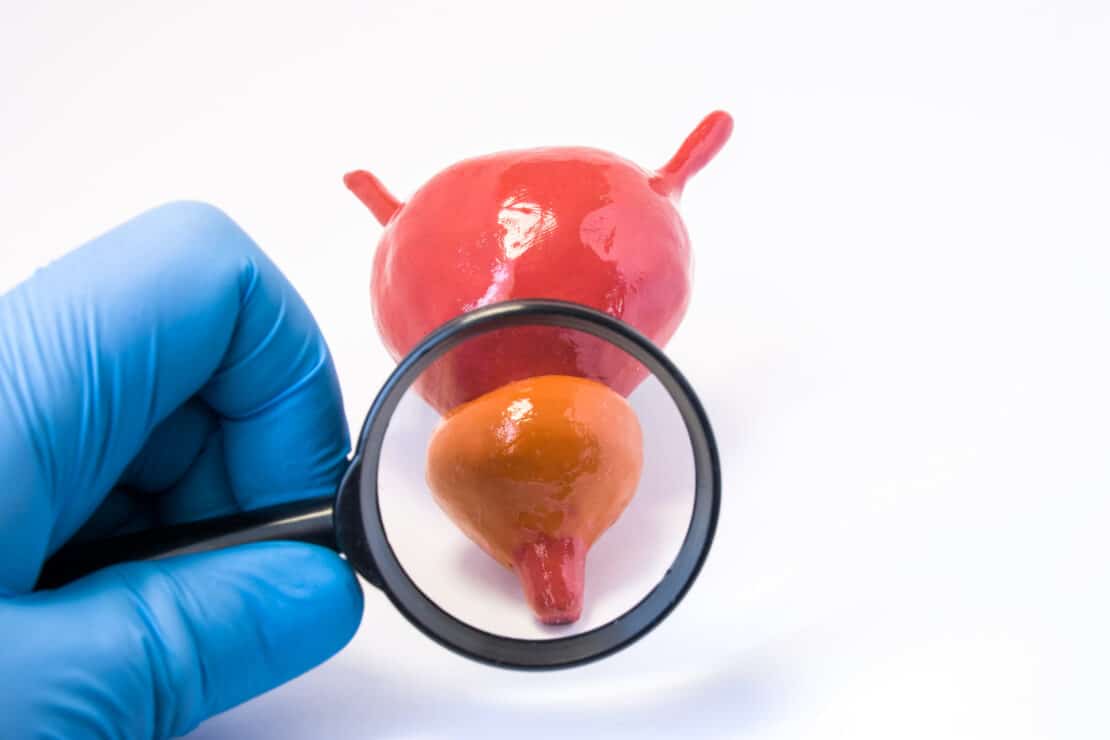It’s a surgery no man would ever want. But for decades, it’s been the standard treatment for a severely enlarged prostate.
When a man’s prostate expands to the point that he can’t urinate, his doctor usually recommends a procedure called TURP. It stands for transurethral resection of the prostate.[1]
During a TURP operation, men are given a general anesthesia. The surgeon gains access to the prostate by inserting an instrument into the tip of the penis. It is pushed up into the urethra. Once there, a cutting tool removes pieces of the prostate. Then the area is cauterized. This means electric current is used to burn the part of the prostate that was cut. It seals blood vessels to minimize bleeding.[2]
Afterward, the patient gets a urinary catheter that is left in place for about a week. This keeps the urethra open to allow urination when post-surgical swelling occurs.
All of this sounds awful enough. But the worst is yet to come…
After TURP, many men are never able to have sex again. Some are left incontinent. They can’t hold back their urine. About 5% of TURP patients have severe bleeding and need a blood transfusion. About 10% of them have complications that require another surgery.[3]
A Better Way to Treat an Enlarged Prostate
A European study offers a safer, less invasive alternative. It’s called prostate artery embolization (PAE).
Instead of cutting away the prostate, PAE shrinks the gland by reducing its blood supply. It’s an outpatient procedure.
A tiny incision is made in either the groin or wrist. A catheter about the width of a spaghetti strand is pushed through the arteries to the prostate.
The doctor then inserts microscopic beads to both sides of the prostate, blocking part of the blood flow to the gland. This causes the prostate to shrink.
The study looked at 1,000 men who had PAE. It was effective more than 80% of the time. And the prostate kept its reduced size for the duration of the study, which was three years.[4]
And here’s the best part…
None of the men suffered sexual problems or incontinence.
Dr. Joao Martins Pisco is an interventional radiologist at St. Louis Hospital in Lisbon, Portugal. He led the PAE study.
“Our results demonstrate that this minimally invasive treatment is successful in the long term and should always be presented to patients who are exploring options to resolve their BPH (enlarged prostate),” Dr. Pisco said.
5 Natural Ways to Keep Your Prostate Small
While PAE is better than the standard treatment, it’s still not without risks. In rare cases, patients suffer painful urination or blood in the urine.[5]
That’s why it’s best to stop your prostate from enlarging to the point that you need the procedure. Here are five natural solutions for a healthy prostate:
1.) Green Tea: It’s loaded with polyphenols, like EGCG. This polyphenol is unique to green tea. It prevents inflammation that leads to an enlarged prostate. It also kills prostate cancer cells.
To get the highest concentration of EGCG, choose matcha green tea. It has 137 times more EGCG than regular green tea.
2.) Lycopene: Research shows this antioxidant-rich carotenoid from yellow and red plants lowers prostate-specific antigen (PSA) scores in men with an enlarged prostate. PSA is a marker for prostate cancer and enlarged prostate.
To get the most protection, you need 15 mg of lycopene a day. One medium tomato contains about 4 mg. A quality lycopene supplement may be the best way to consistently get this nutrient.
3.) Stinging nettle: In addition to taming allergies, stinging nettle is widely used to treat prostate disorders. The herb has been shown to alleviate decreased urinary flow and post urination dripping.
You can find tea preparations of stinging nettle, but it’s most effective when taken as a supplement made from the roots of the plant. Look for one with .8% beta sitosterol. It’s a plant sterol responsible for stinging nettle’s prostate-supportive effects.
4.) Avocados: They’re rich in beta sitosterol. (As are pumpkin seeds and pecans.) Avocados are also great sources of healthy, inflammation-fighting monounsaturated fats. That makes them a double defense against a growing prostate—they fight the causes and the symptoms of an enlarged prostate.[6] [7] [8] [9]
5.) Vitamin D3: In one study, men with prostate cancer took either 4,000 IU of vitamin D3 a day or a placebo. After 60 days, prostate tumors improved in men taking the vitamin. Scientists believe this is because D3 lowers inflammation.
If you’re fair-skinned, being outside in the sun with shorts and a tank top for 10 minutes a day will give you all the vitamin D you need. Darker-skinned people need a bit more exposure. If that’s not an option—especially in the winter—a whole-food supplement will do the trick. We recommend 5,000 IUs a day.
Mainstream doctors often tell men that an enlarged prostate is just part of getting older. It doesn’t have to be that way. Take the simple, natural steps above to keep your prostate healthy.
Editor’s Note: Discover natural, non-drug methods to transform your health. Read our monthly journal, Independent Healing. It’s your best source for unbiased, evidence-based medical information. For more information, click HERE.
Related Articles
Prostate Drugs Can Trigger Diabetes, Study Finds
A Better Way to Treat Prostate Cancer
Enlarged Prostate? Beware of These Dangerous Drugs
References
[1] http://www.webmd.com/men/prostate-enlargement-bph/transurethral-resection-of-the-prostate-turp-for-benign-prostatic-hyperplasia
[2] http://www.roboticoncology.com/turp/
[3] http://www.webmd.com/men/prostate-enlargement-bph/transurethral-resection-of-the-prostate-turp-for-benign-prostatic-hyperplasia
[4] https://www.eurekalert.org/pub_releases/2017-03/soir-ntf022117.php
[5] https://www.ncbi.nlm.nih.gov/pubmed/26276151
[6] https://www.nlm.nih.gov/medlineplus/videos/news/Vitamin_Prostate_032315.html
[7] http://www.healthline.com/health-slideshow/enlarged-prostate-diet#7
[8] https://umm.edu/health/medical/altmed/herb/stinging-nettle
[9] http://www.pcrm.org/health/cancer-resources/diet-cancer/nutrition/how-lycopene-helps-protect-against-cancer

